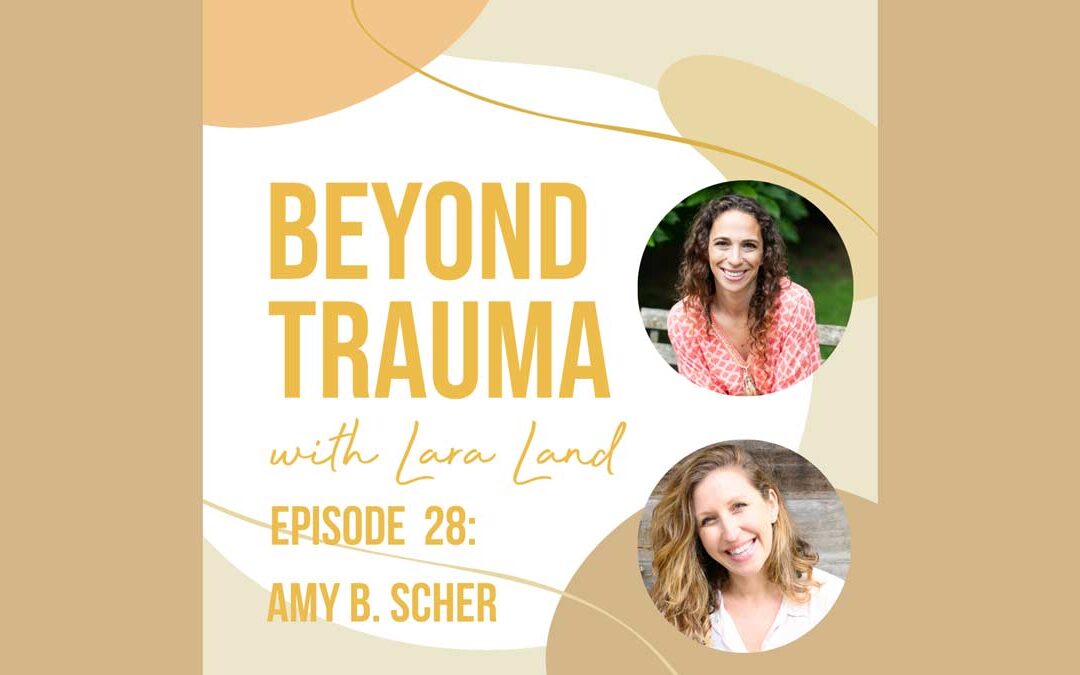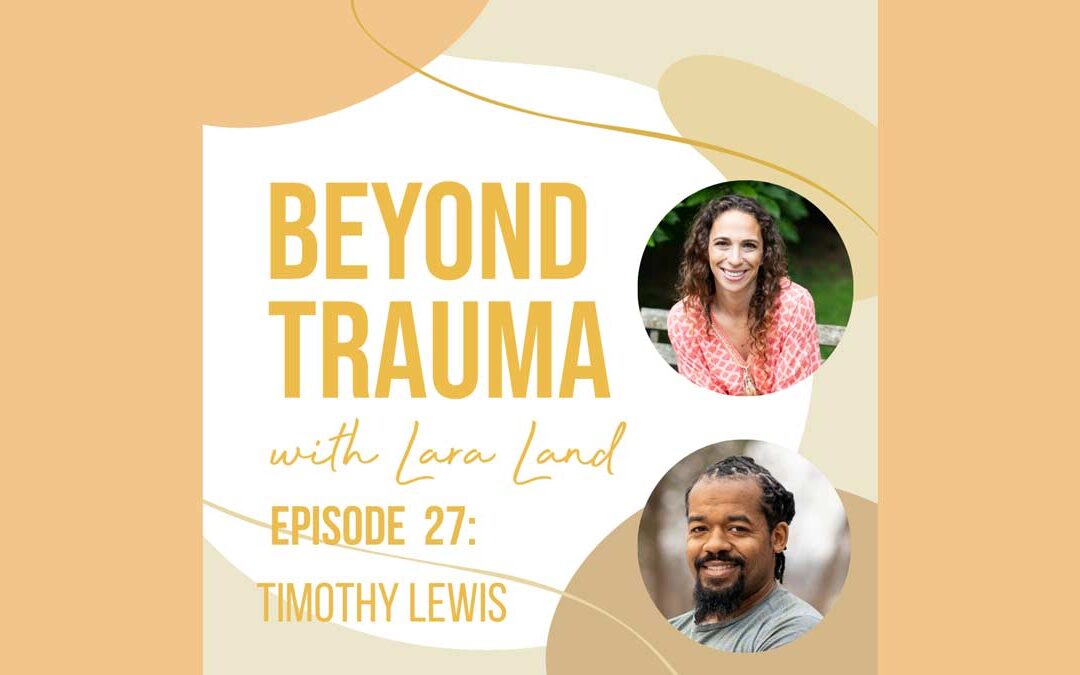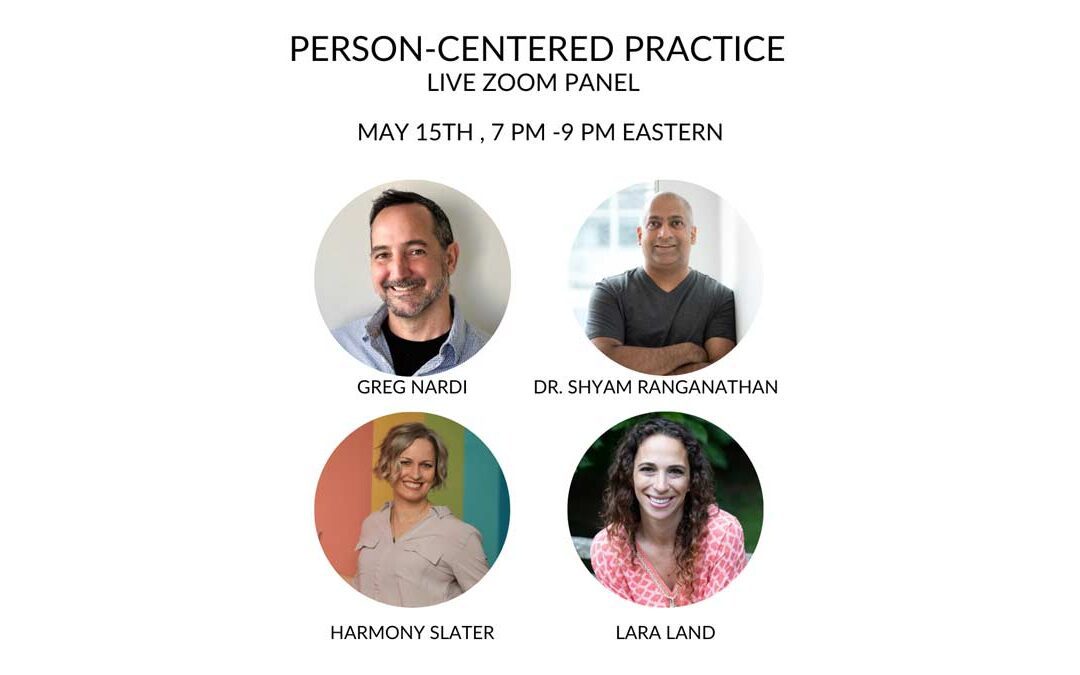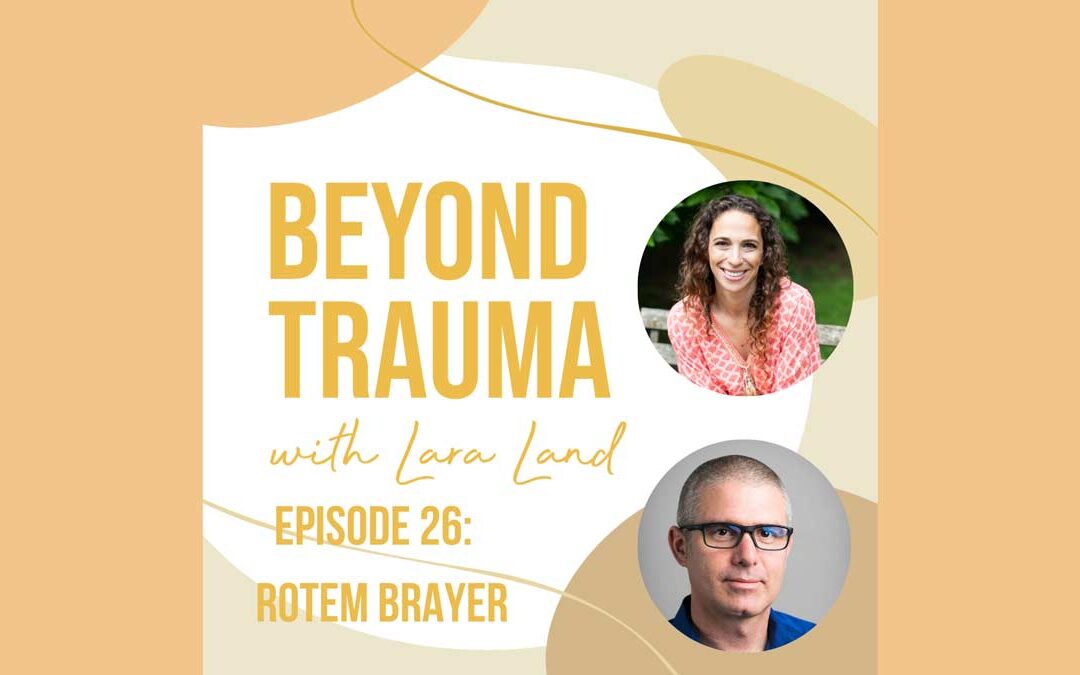
by Lara Land | May 14, 2023 | COACHING, COMMUNITY, LAND BLOG, LARA LAND, Self Improvement, SELF-IMPROVEMENT
Amy B. Scher is a renowned author, energy therapist, and expert in mind-body healing.
Her work revolves around the idea that the body is capable of healing itself with the help of the mind and energy. Amy has helped many people overcome trauma, chronic illnesses, anxiety, depression, and other health problems through her books, workshops, and one-on-one sessions.
Amy’s journey to becoming a mind-body healer began when she was diagnosed with Lyme disease, an illness that left her bedridden and unable to live a normal life. She tried different treatments and therapies but nothing seemed to work. It wasn’t until she discovered energy therapy that her health began to improve. Energy therapy, also known as energy healing or energy medicine, is a form of alternative medicine that works by balancing the body’s energy fields.
Amy was so impressed by the effectiveness of energy therapy that she decided to become a certified energy therapist herself. She went on to write several books on the topic, including “How To Heal Yourself When No One Else Can,” which became a bestseller. The book is a guide to self-healing that draws on Amy’s personal experience and the techniques she has learned over the years.
In her book, Amy shares her own journey to recovery and how she used energy therapy to heal herself. She also provides readers with practical tools and techniques that they can use to overcome their own health problems. Her approach to healing is holistic, taking into account the mind, body, and spirit.
One of the key techniques that Scher uses is Emotional Freedom Technique, or EFT, is a form of energy therapy that involves tapping on specific points on the body to release blocked energy and promote healing. This technique is based on the idea that negative emotions and traumatic experiences can create energy blockages in the body, which can lead to physical and emotional pain. By tapping on these energy points while focusing on the negative emotions, you can release these blockages and promote healing.
Another technique she uses is muscle testing. Muscle testing is a technique used to evaluate the strength or weakness of a muscle in response to a particular stimulus. It is often used in alternative medicine and holistic health practices to diagnose health issues, determine food sensitivities or allergies, and identify emotional or psychological stressors. Muscle testing can be used to answer questions about yourself by tapping into your body’s innate wisdom and intuition.
Scher has dedicated her life to helping others heal using EFT, muscle testing, and other mind-body techniques. She has worked with clients all over the world, helping them overcome a wide range of physical and emotional challenges, from chronic pain and illness to anxiety and depression.
One of the things that sets Scher apart is her focus on empowering her clients to take control of their own healing journey. She believes that everyone has the ability to heal themselves and that the key is to tap into the body’s innate healing wisdom. Through her books and workshops, Scher teaches people how to use EMT and other techniques to connect with their inner healer and create a more vibrant and fulfilling life.
Scher’s approach to healing has been widely praised for its effectiveness and accessibility. She has helped countless people overcome chronic conditions and live happier, healthier lives. Listen to her story in her own words in the latest episode of the Beyond Trauma Podcast.

by Lara Land | May 7, 2023 | COACHING, COMMUNITY, LAND BLOG, LARA LAND, Self Improvement, SELF-IMPROVEMENT
Yoga is a powerful tool for transforming the body, mind, and spirit. Yoga can also also be used as a force for good in the world. I’ve shared a good deal about how we are doing that with the yoga nonprofit, Three and a Half Acres Yoga. Today I wanted to share about another organization that is harnessing the power of yoga to make a difference.
Yoga Gives Back is a nonprofit organization that is dedicated to empowering women in India through microfinance and education. The organization was founded in 2007 by Kayoko Mitsumatsu, a yoga practitioner who was inspired to give back to the country that gave her the gift of yoga.
India is the birthplace of yoga, but it is also a country where poverty and inequality are rampant. Yoga Gives Back is working to address these issues by providing microloans to women in India who want to start their own businesses. By giving these women access to capital, Yoga Gives Back is helping them to achieve financial independence and break the cycle of poverty.
But Yoga Gives Back is not just about providing financial support. The organization also recognizes the importance of education in empowering women. That’s why they offer scholarships to girls in India who would not otherwise be able to attend school. By giving these girls access to education, Yoga Gives Back is helping to create a brighter future for the next generation of women in India.
Yoga Gives Back is committed to promoting awareness of the issues facing women in India. They host events and workshops around the world to educate people about the impact of microfinance and education on women’s empowerment. By raising awareness, Yoga Gives Back is helping to build a global community of support for their mission.
If you are a yoga practitioner who wants to make a difference in the world, consider supporting Yoga Gives Back.
You can now donate any amount to my personal campaign and receive the LINK for my trauma-sensitive zoom yoga class on Saturday, June 10th 9am-10am.
Your support is appreciated. DONATE HERE!

by Lara Land | Apr 30, 2023 | COACHING, COMMUNITY, LAND BLOG, LARA LAND, Self Improvement, SELF-IMPROVEMENT
Curiosity is one of the central tenets of mindfulness and it is a part of the practice which comes naturally to Timothy Lewis. Born curious, Timothy has allowed life to lead him and has committed to listening to and following the signals the universe gives him about which direction to go. This practice led him to take on the challenging role of a science teacher in a New York City school and told him when it was time to move on. It also led him to me.
Timothy walked into my yoga studio, Land Yoga, one New Year’s Eve. We had a regular NYE candle-lit class that often drew many new people to try out the space, but Timothy was different. He didn’t just come for New Year’s, he returned again and again. Timothy became a regular at Land Yoga participating in daily Ashtanga classes, yoga philosophy courses, and an eight-week mindfulness-based stress reduction (MBSR) program taught by my husband, Thimo Wittich. He eventually went on to become a certified yoga teacher and mindfulness coach.
I knew immediately that once he was a 200-hour certified yoga teacher I would invite him to take the Three and a Half Acres Yoga trauma-informed yoga teacher training and become a trauma-informed yoga teacher. I’m so glad I did. As a trauma-informed yoga teacher, Timothy has supported many Three and a Half Acres Yoga partners, bringing chair yoga, especially to our partners at Saint Mary’s in Harlem.
Timothy also brought yoga and breathwork to his mother when she was in the hospital with covid. He shares this story and chair yoga practices in my book, The Essential Guide to Trauma Sensitive Yoga and will be speaking on his experience at many of the book release events including a special event on May 13th for anyone who supports the nonprofit, Three and a Half Acres Yoga with any level donation. I hope many of you will be there supporting his work and that of the nonprofit and the book! You can see more book events HERE.
Timothy’s curiosity is still leading him. Most recently it brought us both to an intimate talk with Deepak Chopra at Eddie Stern’s Ashtanga yoga space and temple. If you are looking to grow your curiosity here are a few tips:
- Pursue lifelong learning: Take courses, attend workshops, and read books.
- Seek out new experiences: This can be as simple as trying a new hobby, visiting a new place, or meeting new people.
- Practice mindfulness: Mindfulness practices, such as meditation or yoga, can help us to cultivate a sense of curiosity and wonder about our inner experiences and the world around us.
For more of Timothy’s wonderful tips on curiosity and the journey to becoming a trauma-informed yoga teacher, take a listen to him on the latest episode of the Beyond Trauma Podcast

by Lara Land | Apr 23, 2023 | COACHING, COMMUNITY, LAND BLOG, LARA LAND, Self Improvement, SELF-IMPROVEMENT
The yoga “scene” in the west is driven by systems. We have Iyengar Yoga, Ashtanga Yoga, Vinyasa Yoga, Yin Yoga, Restorative Yoga and on and on. New ones are being created regularly and it is often the case that when one gets a yoga teacher certification (YTT) in a particular yoga studio, they have learned a very specific and particular system that may not even translate outside that studio. This makes finding work teaching yoga very difficult, but that is for another blog.
What I wanted to discuss today is the way systems can help and harm individuals, especially trauma survivors, but including all of us.
Systems are a way of organizing and disseminating information. They help teachers to teach and us to learn and they reflect patterns, categories, and themes which are helpful to understand and be able to identify in teaching. They are never, however, an end all.
Most of us don’t actually fit into one system or way of learning or being.
It’s way more likely that parts of different approaches work best for us or that different yoga styles fit different periods in our life. As a teacher, being able to know many models and adapt for your individual students is a high level and under accessed skill. This is what we teach in trauma sensitive yoga and what we hope more yoga teachers will begin to excel at.
Let’s look at the technique of Tristana, central to Ashtanga Yoga as one example. When tristana, the 3-pointed focus of listening to breath, gazing at one point (drishti), and feeling the body’s position in space is taught in the Ashtanga Yoga model, it is taught as an all-in-one method for experiencing presence, and indeed it is a good technique for that for many people.
Some of us, especially if we are trauma survivors, however, find it challenging to focus on breathing or sometimes to be in our bodies. If it’s forced upon us, it could cause us to feel that we don’t belong or can’t do yoga.
However, with a slight teaching adjustment, Tristana could be the answer for trauma survivors seeking yoga. Instead of instructing that all three focus points must be implemented together, why not use the three-pointedness of the Tristana focus as a way that trauma survivors can move in and out of intensity with subtle shifts? Perhaps putting 90% of the focus on the gaze helps them to stay grounded in the posture. Then maybe they can shift a little more focus to breath on a day they feel more resourced.
There is so much that can be done here with Tristana and other parts of the Ashtanga and all yoga systems if we just take the time out to think on and get educated on trauma sensitivity, person centered practice and breaking the molds! If this is something that interests you, make sure to take a look at my YouTube talk, book, and sign up for the Person-Centered Practice Panel discussion on Zoom May 15th 7pm – 9pm eastern featuring Harmony Slater, Greg Nardi, Dr. Shyam Ranganathan, and myself.

by Lara Land | Apr 16, 2023 | COACHING, COMMUNITY, LAND BLOG, LARA LAND, Self Improvement, SELF-IMPROVEMENT
Eye Movement Desensitization and Reprocessing (EMDR) is a therapeutic technique that has been gaining popularity in recent years for the treatment of trauma.
EMDR was developed in the late 1980s by psychologist Francine Shapiro, who observed that rapid eye movements seemed to alleviate her own distressing thoughts and feelings. Since then, EMDR has been used to help individuals recover from various traumatic experiences, such as combat, sexual assault, natural disasters, and childhood abuse.
The efficacy of EMDR for trauma healing has been extensively studied, and neuroscience suggests that it is an effective treatment for trauma-related disorders such as post-traumatic stress disorder (PTSD), acute stress disorder (ASD), and other anxiety disorders. In fact, EMDR has been recognized as an evidence-based treatment by a number of organizations, including the American Psychological Association (APA), the World Health Organization (WHO), and the Department of Veterans Affairs (VA).
One of the key features of EMDR is the use of bilateral stimulation, which involves alternating stimulation of the left and right sides of the body. This can be done through eye movements, auditory tones, or physical tapping. The idea behind this technique is that it helps to activate the brain’s natural processing mechanisms, allowing the individual to reprocess traumatic memories in a way that reduces their emotional intensity and associated negative beliefs.
During an EMDR session, the therapist will guide the client through a series of steps that involve recalling a traumatic memory while engaging in bilateral stimulation. The therapist will also help the client to identify any negative beliefs or emotions associated with the memory, and work with them to develop more positive and adaptive beliefs. The goal is to help the client to reprocess the memory in a way that reduces its emotional impact and allows them to move forward with their life.
While the exact mechanisms behind EMDR are still not fully understood, research suggests that it may help to activate the brain’s natural healing processes by promoting neuroplasticity and facilitating the integration of emotional and cognitive information. EMDR has also been found to be effective for a wide range of individuals, including those who have not responded well to other forms of therapy.
In my latest episode of the Beyond Trauma podcast, I interview Rotem Brayer an EMDR therapist about trauma healing and why he believes EMDR is the choice modality for trauma healing. We discuss neuroscience, trauma, EMDR, and why we are seeing an increase in mental health disturbance despite all the advancements in medications. We also cover sleep, somatics, and community. I hope you’ll take a listen and drop a review!






Recent Comments